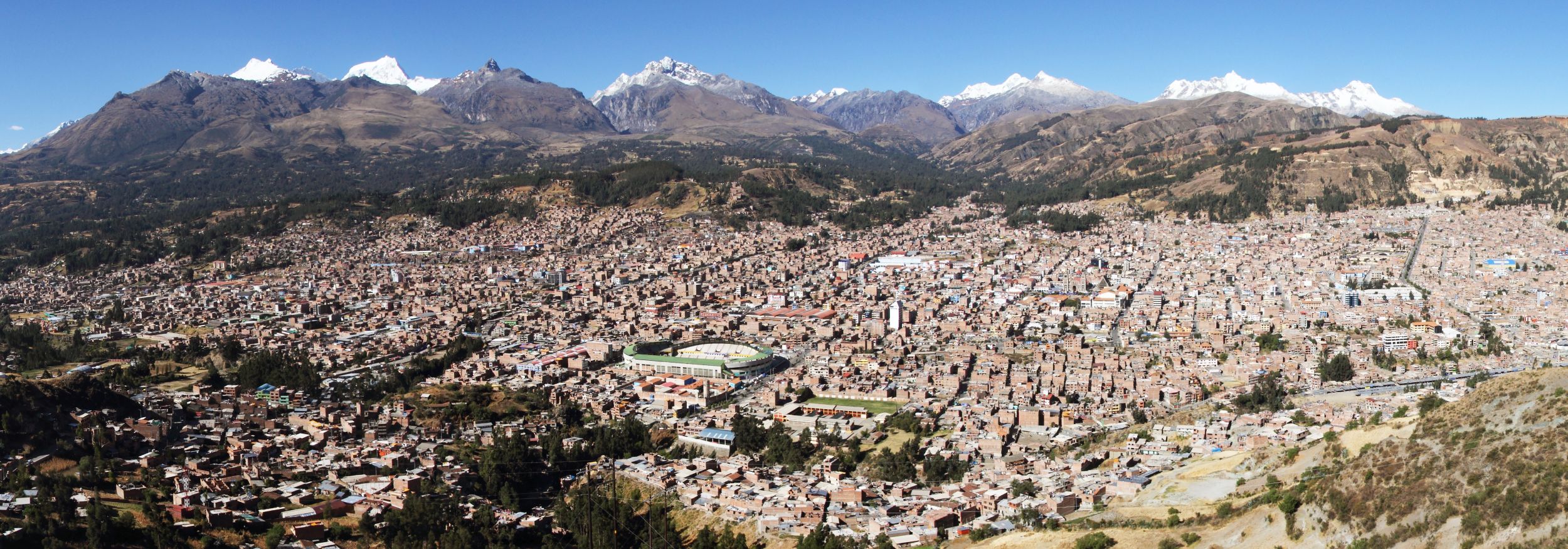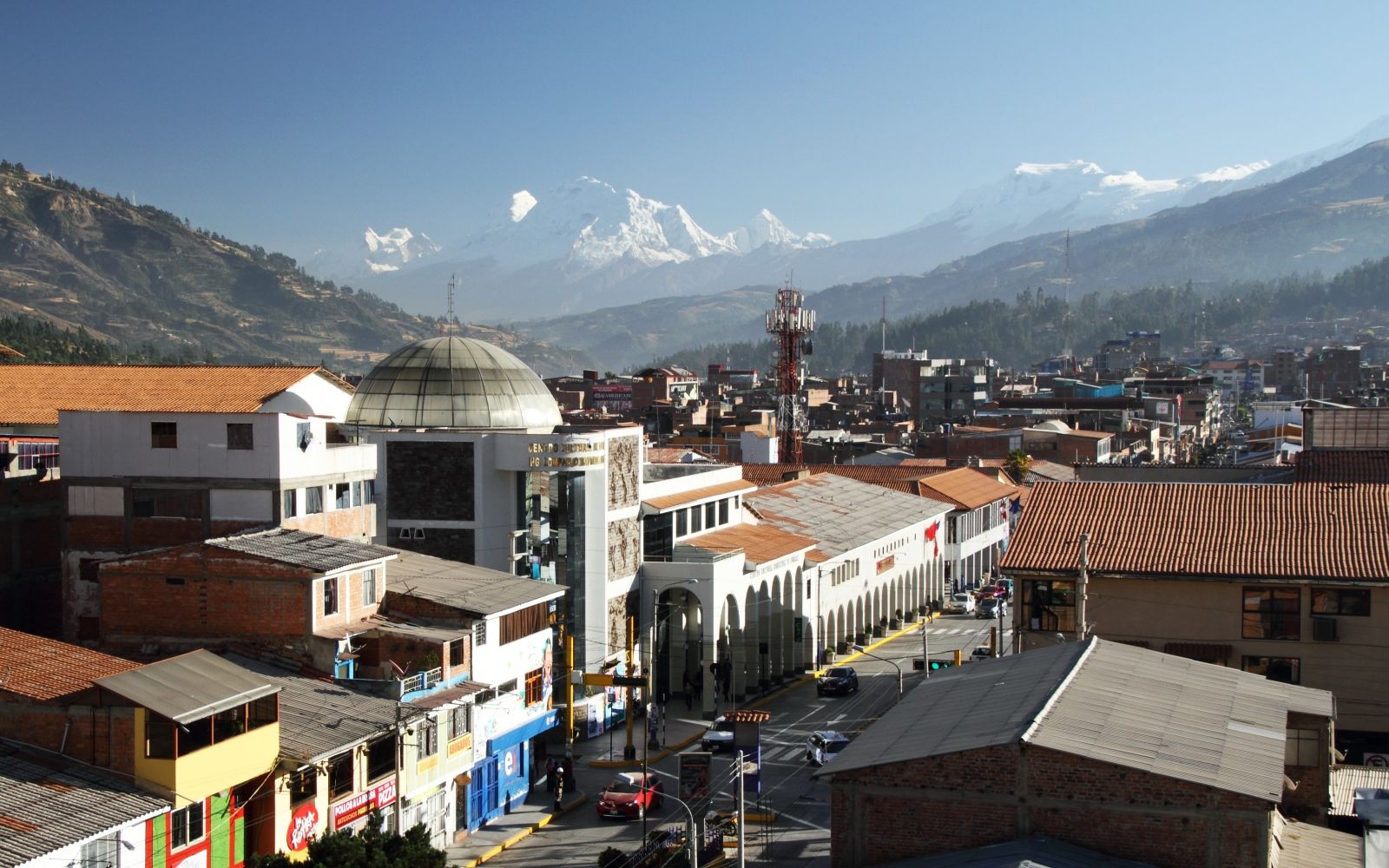

Huaraz is located at an elevation of approx. 3050 m asl. in the Río Santa Valley - also known as Callejón de Huaylas - embedded between the Cordillera Blanca and the Cordillera Negra. The capital city of the Ancash Region is the home of around 100.000 people and represents an important centre of economy and tourism. All those intending to do smaller or larger hiking trips in the Cordillera Blanca will inevitably start from this place. Huaraz can be reached by bus from Lima within a comfortable and scenic day trip. Like most other hispano-american cities, also this one is characterized by a regularly aligned road system and a central square or plaza. However, the urban landscape differs from cities which are otherwise comparable to Huaraz. This, however, was not always the case.

A stroll through Huaraz


You can explore the centre of Huaraz by clicking on the arrows or in the image.
These scenes show the city centre from different perspectives and at different levels of detail - including a morning view over the main road to the snow-clad summits of Huascarán, the reflection of the cathedral in a glass front, and the view from above.
What is your impression of Huaraz? Visit also the contributions on Lima, Arequipa, Cusco, Salta, and Mendoza. Which differences to Huaraz can you recognize? Or is one of these cities even similar to Huaraz? Note the buildings in particular.













